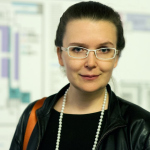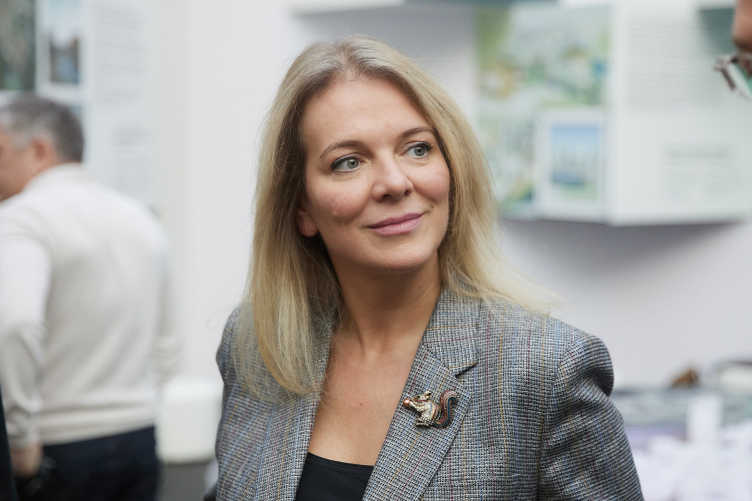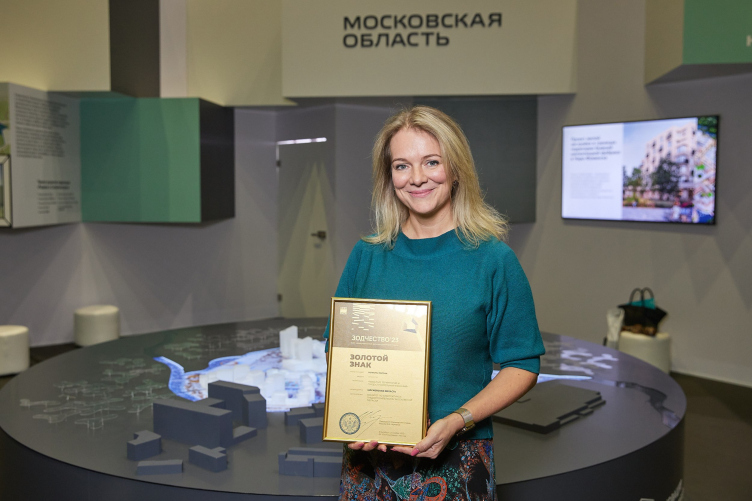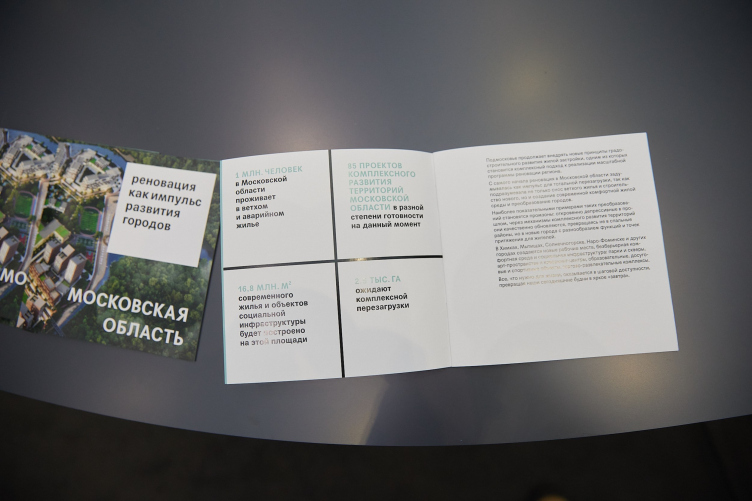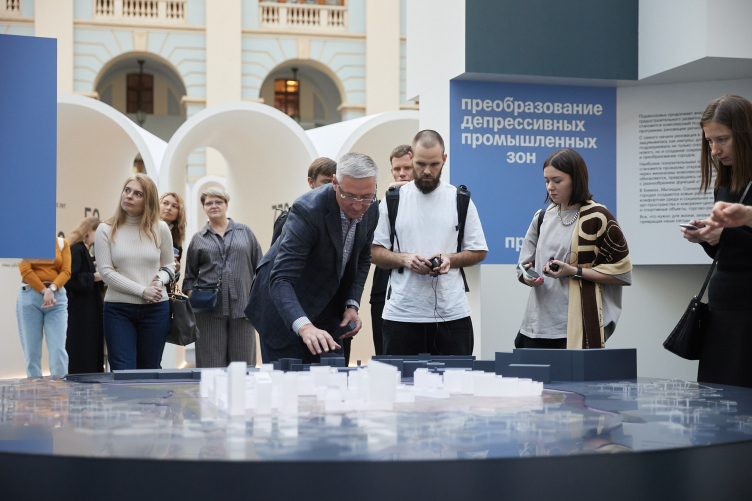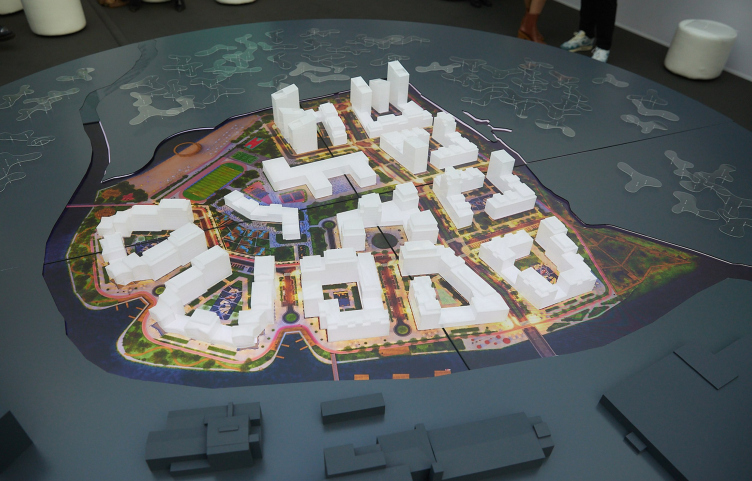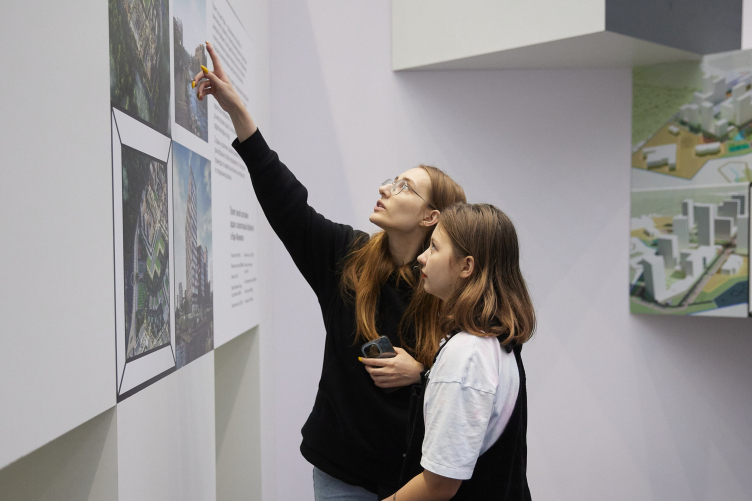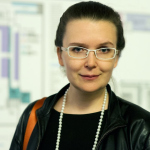What are the mechanisms that the Moscow Region uses for managing Integrated Land Development projects?
Alexandra Kuzmina, Chief Architect of the Moscow Region. Mosoblarchitecture at Zodchestvo 2023
Copyright: Photo: provided by the Union of Architects of Russia
Alexandra Kuzmina,
Chief Architect of the Moscow Region:
At the end of 2020, Federal Law No. 494-FZ on amendments to the Urban Planning Code of the Russian Federation was adopted. The law introduced the concept of Integrated Land Development into the Code, as well as a new mechanism for the implementation of investment projects, which, among other things, involves the resettlement of people living in dilapidated and hazardous buildings. In this regard, we have made appropriate changes to the regional standards of urban planning design and developed a number of normative legal acts, including the law of the Moscow Region No. 2/2021-OZ “On some issues of Integrated Land Development of municipalities of the Moscow Region ...” and the Decree of the Government of the Moscow Region No. 29/3 “On approval of the Regulations on the procedure for Integrated Land Development of in the Moscow Region regions”, which further defines the procedure for the implementation of the Integrated Land Development. The decision on implementing the Integrated Land Development in the Moscow Region is assigned to local governments, and the regional government remains the controlling body. Quality standards for housing construction have also been developed, as well as a set of rules guaranteeing a high level of design and construction of housing in the region.
In 2021, the Fund for Assistance to the Integrated Land Development of the Moscow region was also established, in 2022 – the Integrated Land Development project office, which employs a whole group of experts from different governmental agencies, which allows for an integrated approach to project development.
Alexandra Kuzmina, Chief Architect of the Moscow Region, with the golden sign of Architecture 2023, received by Mosoblarchitecture for the project presented at the festival
Copyright: Photo: provided by the Union of Architects of Russia
In how many districts of the Moscow Region has the Integrated Land Development program been implemented?
At the moment, 85 projects are at various stages; 11 contracts have already been concluded. Almost a third are located in previously uninhabited, empty and former industrial territories, and the regional Fund for the Promotion of Integrated Land Development is specifically engaged in them.
At the same time, we allot only abandoned and vacant territories for complex residential development.
Round table “Renovation and Gentrification”, Zodchestvo 2023
Copyright: Photo: provided by the Union of Architects of Russia
Mosoblarchitecture at Zodchestvo 2023
Copyright: Photo: provided by the Union of Architects of Russia
Where are the Integrated Land Development projects more numerous – closer to the Moscow Ring Road or closer to the borders of the region?
Of course, the first belt near the Moscow Ring Road is more attractive for investors. This is where the region’s first Integrated Land Development project is situated, which was awarded the first prize at the architectural competition “Best Moscow Region Project” in the nomination “Best Multistory Housing Property”, and which was awarded the Silver Sign at Zodchestvo 2022 – this is the housing complex “Dolina Yauzy” (“Yauza Valley”). The situation is more difficult, of course, with the second and third belts – the return on investment is obviously lower, and it’s harder to start an auction.
There is a rare lucky case of Naro-Fominsk. People spent years working on returning the historical memory to the place; and they implemented the concept of redeveloping the historical part of the former silk factory and gracefully integrating the historical buildings into the modern public space with a multifunctional environment and a pedestrian area. The architectural company DNK ag developed an interesting housing project that became the continuation of the red-brick factory ensemble. The place changed for the better so much that we and the architects texted each other: hey, maybe we all should move to Naro-Fominsk? And they go: yeah, probably, a good idea! This small town has everything that Moscow has to offer, save for the University. If it did have a branch of the University, then it would really have it all: the young people could study there, and then the elderly could teach. You are very lucky when conscious people, real professionals, and I am talking about both the developer and the architects, start working together on the same territory.
Mosoblarchitecture at Zodchestvo 2023
Copyright: Photo: provided by the Union of Architects of Russia
“City on an island”, the authors of the concept – DNA ag, the layout was the main exhibit of the stand of the Moscow region at Zodchestvo 2023. Mosoblarchitecture at Zodchestvo 2023
Copyright: Photo: provided by the Union of Architects of Russia
How do you achieve diversity of development, and, at the same time, its homogeneous character? Where do you take the resources for development?
We don’t work with a land site – we always work with a territory. In resolution 29/3, which I mentioned above, we stipulated the requirements for a comfortable environment. These are additional encumbrances beyond the regional town planning regulations. If they did not exist, each site would yield more output of “useful” areas that actually sell.
So, do I get it right that this comes at the developer’s expense?
The requirements depend on the size of the territory. A small site, let’s say, under 5 hectares, will lose no more than 2% – mainly this will be bicycle trails running along its perimeter. For the larger territories, like 10 hectares and more, you need to provide a whole complex of arrangements aimed at creating a comfortable environment – up to 20% of the area may be occupied by parks, boulevards, minor architectural forms, retail, and entertainment. And these requirements, they are not just an encumbrance – they are also factors that increase the property’s attractiveness – a forward-looking developer always understands that.
We try to reserve possibilities for developing a comfortable environment at the very start of putting together the master plan. Of course, there are territories situated next to the forest or water, where you are lucky to have an opportunity for making a park or a riverside boulevard outside the boundaries that you have, and we use this as well, thus creating new improved spaces, but this is rather an exception than a rule – such land sites are few and far between.
We also strive for public spaces to be thematic and connected to the history of the area, so that the memory does not fade away with new development: unlike Moscow, the renovation of the Moscow region is funded by extra-budgetary sources, and the population growth in the locations is quite significant.
If I were to ask you how the renovation of the Moscow region differs from renovation in other regions and in Moscow, how would you formulate it?
We differ in that our project goes through several stages of urban planning analysis and development before construction begins. First, we do not follow the path of dense point development, even if space is limited. An example is Microdistrict 20 in Mytishchi: you see a small plot, seemingly filled with residential buildings – but in fact, this is not the case. Beyond the territory, we find opportunities for expanding social infrastructure, making additions to schools, and so on.
The second point is that in the Moscow region, we introduced the concept of a master plan. This document represents a meticulously developed architectural and urban planning concept that, at the stage before signing the agreement on Integrated Land Development, establishes all the key parameters of future development, from technical and economic indicators to the plan for the future use of the territory.
Most regions operate through land-use planning documentation, but this is already the next stage after the master plan, which we develop at the start. We have made master plans mandatory at the legislative level, and some regions have already followed our example.
The master plan, which forms the basis for the project, on the one hand, guarantees the quality of life for residents during the implementation of new comprehensive development, and on the other hand, minimizes the risks for developers and the region because it allows for cost assessment at an early stage.
Mosoblarchitecture at Zodchestvo 2023
Copyright: Photo: provided by the Union of Architects of Russia
Mosoblarchitecture at Zodchestvo 2023
Copyright: Photo: provided by the Union of Architects of Russia
Just for my information, is the master plan in the Moscow region legislatively established? How, where, and by whom is its development managed?
It is enshrined in the law “On the General Plan for the Development of the Moscow Region”. We have outlined an implementation mechanism, such as comprehensive territorial development, based on federal estimates, assessing it as a specific percentage of the layout and demarcation project. We assigned the authority for overseeing its development to the Committee on Architecture and Urban Planning of the Moscow Region.
We have excellent subordinate institutions: Mosoblgazotrest, responsible for data collection, and the Institute of Urban Planning of the Moscow Region. True professionals work there, and thanks to their expertise, we can jointly provide an initial assessment of the territory – typically, they are the ones working on the master plans. However, if the municipality decides to involve another designer, we will support their work in the same way. Working is easy when the rules are the same for everyone.
A pressing question for our audience – how do architects become part of the Integrated Land Development program? Who selects the authors: your department, the client, or does the client consult with you?
A pretty strange question!
When we talk about the decision made by the client regarding the architect they will work with, I must admit that I have no mechanism of influence. The market is the market. From an ethical standpoint, I do not have the right to recommend anyone – not only by law but also morally, as it would be unfair competition. Unfortunately, sometimes, not architects but designers win some competitions, and then a lot of work is needed to bring their projects up to our standards through recommendations from experts in our Working Group of the Architectural Commission and the staff of the Committee on Architecture and Urban Planning. We try to help everyone and never make exceptions for anyone, whether they are a good or a less experienced architect.
Unfortunately, there are now many poor architects out there. I state this with regret, and I believe the problem lies deep, perhaps linked to the disappearance of specialization and the shift to academic mobility, which gives us excellent “technician” architects. However, upon graduation from the master’s program, many are, for the most part, undereducated. Fortunately, there are good design firms with strong traditions, where the elevation of qualifications occurs through mutual exchange, essentially through mentorship. Much, of course, depends on the individual.
Our standards are written the way they are due to the fact that the average quality of design here is very low. The slogan of our standards is “better is allowed, worse is not”. We have described, through text, the minimum set of quality requirements.
Certainly, the process is inert. We plan now, and we will be able to evaluate the results, as the Zodchestvo slogan goes, “tomorrow”. Or even the day after tomorrow. Currently, we hypothesize that our measures and standards will be sufficient to achieve the necessary quality of development, regardless of the quality of the designer.
